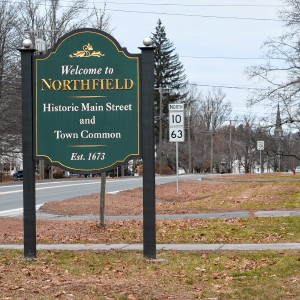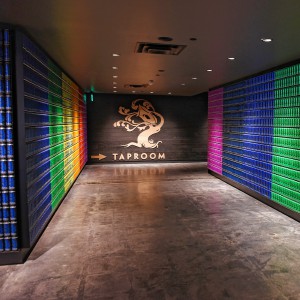Speaking of Nature: The Red-Bellied Woodpecker
| Published: 12-21-2020 8:57 AM |
Last week, I started a two-part segment on woodpeckers. I took a look at the northern flicker, which is a bird that is somewhat uncommon in our area during the winter months. This is because flickers like to eat ants and they like to look for them on the ground. Well, with the snow from last week’s storm still blanketing the landscape, I think it’s fairly easy to understand why flickers that stay in our area for the winter may have a difficult time surviving.
The good news is that a flicker that stumbles upon a well-stocked feeding station may actually have a chance at making it through the snowy months. I am very happy to report that the male flicker that was seen at my feeder last week has become a regular and is taking full advantage of the peanuts, shelled sunflower seeds and suet cakes that are available at my feeders 24-7. He looked fairly miserable during the heaviest snowfall, but he wasn’t being at all shy about eating.
Also at my feeders on that very snowy day was a female red-bellied woodpecker. Much smaller than the flicker (10 inches long compared to the flicker at 14 inches long), the red-bellied woodpecker is much more at home during the winter months. I have red-bellied woodpeckers at my feeders every winter, but I have noticed that there is a particular female that has been a feisty presence here for the past 3 to 4 years. She is quite a character.
The really interesting thing about red-bellied woodpeckers is the fact that, although they are “regulars” in our area, they are also relatively recent arrivals. When I was a boy of 12 years old there was no such bird in the woods behind my house. To prove my memory accurate, I went into the archives and retrieved a old copy of Peterson’s Field Guide to the Birds (Eastern Edition), checked the copyright date and found that it was 1980.
Then I flipped to the range map of the red-bellied woodpecker and discovered that (in 1980) the bird was a resident of coastal Connecticut, Long Island, and the far-western portion of New York State out near Buffalo. The state of Massachusetts was white, but there was a notation that the species had nested in Massachusetts. So, that can be interpreted to mean that the bird was not considered a resident, but more of a rare and very occasional visitor.
By the time I was 22 years old, I had just finished my first round of wildlife training at UMass Amherst and I was far more in tune with the birds that lived in the woods behind my parents’ house. As a result, I was well prepared to notice something new and the red-bellied woodpecker was definitely something that fell into that category. Responding to a changing climate and perhaps finding support from humans in the form of well-stocked feeders, red-bellied woodpeckers joined the ranks of other bird species that were slowly creeping northward.
Now, you may be wondering why this species is called a red-bellied woodpecker when it has features that are so much more eye-grabbing. Well, there is already a bird called a ladder-backed woodpecker, so that name is out. This would be in reference to the bold black-and-white striping across the bird’s back and wings, which is definitely noticeable from a distance.
Red-bellied woodpeckers also have a large swath of gorgeous red feathers on their heads, so “red-headed” woodpecker might have been a good name if not for the fact it, too, was also already taken. This is another species that may arrive in our area if the climate warms by 1 degree Celsius, so keep your eyes peeled. So, with those names taken, the faint blush of red feathers on the bird’s belly became the key feature for which the species was named. I have many photos of these birds in my collection, but it was not easy to find one with the red belly showing.
Article continues after...
Yesterday's Most Read Articles
 New owners look to build on Thomas Memorial Golf & Country Club’s strengths
New owners look to build on Thomas Memorial Golf & Country Club’s strengths
 Survey shows Northfield residents want new development — but not near their homes
Survey shows Northfield residents want new development — but not near their homes
 Orange man gets 12 to 14 years for child rape
Orange man gets 12 to 14 years for child rape
 As emergency action plan is crafted, Tree House to maintain 1,500 capacity for summer
As emergency action plan is crafted, Tree House to maintain 1,500 capacity for summer
 Real Estate Transactions: April 19, 2024
Real Estate Transactions: April 19, 2024
 Man granted parole for role in 2001 deaths of 2 Dartmouth College professors
Man granted parole for role in 2001 deaths of 2 Dartmouth College professors
So, if you have feeders up and full of food I would suggest that you put a comfortable chair by a window, get yourself something warm and comforting to drink and spend an hour watching the birds. A quick glance out the window will pay off as often as a slot machine, but a good long sit will likely pay off in a way that will make you far more pleased with yourself. All of those little visitors out there are wonderful to watch, but there is no arguing with the idea that any sighting of an unusual bird is unusually fun.
Please have a very safe and merry Christmas and make sure to keep those feeders full. I will have one more column to finish off 2020 and I am pleased to be able to offer this teaser: I have surpassed my goal of 20,000 photos and number 20,069 is a real beauty. I can’t wait to share it with you.
Bill Danielson has been a professional writer and nature photographer for 23 years. He has worked for the National Park Service, the US Forest Service and the Massachusetts State Parks and currently teaches high school biology and physics. Visit www.speakingofnature.com for more information, or head over to Speaking of Nature on Facebook.

 Speaking of Nature: Indulging in eye candy: Finally, after such a long wait, it’s beginning to look like spring is here
Speaking of Nature: Indulging in eye candy: Finally, after such a long wait, it’s beginning to look like spring is here Celebrating ‘Seasonings’: New book by veteran preacher and poet, Allen ‘Mick’ Comstock
Celebrating ‘Seasonings’: New book by veteran preacher and poet, Allen ‘Mick’ Comstock Faith Matters: How to still the muddy waters of overthinking: Clarity, peace and God can be found in the quiet spaces
Faith Matters: How to still the muddy waters of overthinking: Clarity, peace and God can be found in the quiet spaces A time for every purpose under heaven: Free sing-a-long Pete Seeger Fest returns to Ashfield, April 6
A time for every purpose under heaven: Free sing-a-long Pete Seeger Fest returns to Ashfield, April 6
